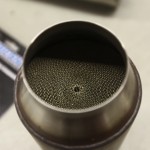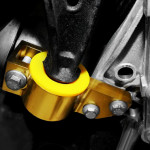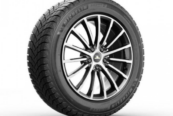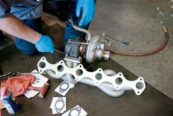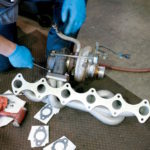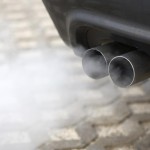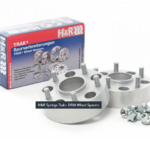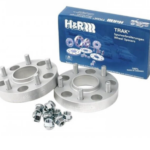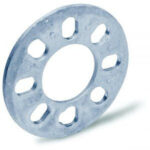If you tune engines (or if you have plans to tune engines) you should learn how to read spark plugs. It's a subtle art that will tell you everything you ever wanted to know about how your engine is operating.
Spark plugs give away valuable info, like the direct effect fuel, oil, and other mechanical parts have on the engine. A quick look at your spark plug can tell you about problems you didn't even suspect. Reading the signs will help you prevent future deterioration and possible engine damage.
And you'll know what you need to tweak to achieve peak engine performance.
Find out how you're engine is running with this useful chart. Diagnose your engine’s performance, and make the needed adjustments!
| HOW TO READ SPARK PLUGS | ||
| Appearance & Symptoms | Possible Causes | |
| NORMAL | - colour is light gray, brown, or beige | - condition is good - spark plug is functioning optimally |
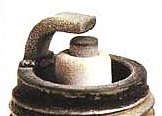 |
||
| DRY FOULING | - black soot build-up - poor starting and misfire |
- clogged air filter - overly retarded timing - low compression - vacuum leak - improper spark plug heat range |
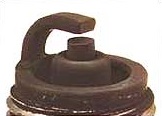 |
||
| WET FOULING | - wet appearance - black and oily appearance |
- air-to-fuel mixture is too rich - damaged or blown head gasket - damaged piston ring - problems with valvetrain |
 |
||
| DEPOSITS | - white, ashy deposits on the firing end | - poor fuel quality - oil leaks |
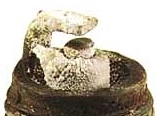 |
||
| OVERHEATING | - glazed, glossy appearance - small black deposits - electrode wear - loss of high-speed power |
- overheating by over-advanced timing - poor cooling - lean air-to-fuel mixture - improper heat range |
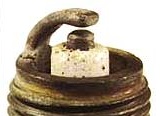 |
||
| LEAD FOULING | - yellowish deposits on insulator nose - misfiring at high RPM - hard acceleration |
- gasoline is too rich in lead |
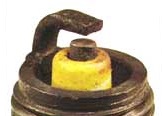 |
||
| BREAKAGE | - broken insulator on central electrode - bent ground electrode - misfire or power loss |
- detonation - sudden changes in temperature - excessive vibration - mechanical collision between parts |
 |
||
| MELTING | - lustrous, uneven electrode surface - center/ground electrode is melted - power loss |
- overheating - improper heat transfer - loose installation - pre-iginition on advanced ignition timing - improper heat range - lean condition |
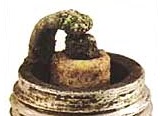 |
||
| EROSION, CORROSION, OXIDATION | - oxidized electrodes - green spots & coloration - fretted, rough surface |
- occurs in time with leaded gasoline |
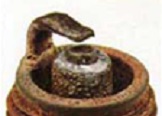 |
||
| LEAD EROSION | - chipped electrode tip - thinned out electrode tip |
- lead compounds in gasoline reacting with nickel in electrodes |
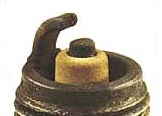 |
||



